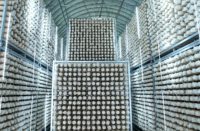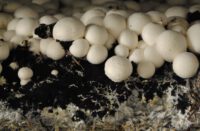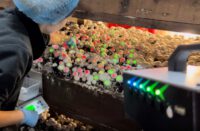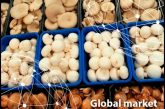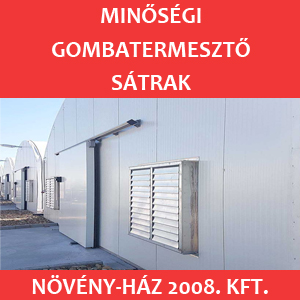What pops up in your mind when you see the Chinese word juncao? Probably nothing too much apart from it seeming exotic. However, for many poor farmers in Papua New Guinea, South Africa, Lesotho and Rwanda, juncao means a mushroom cash crop.
It is a seemingly magic technology that enables them to grow many types of nutritious and delicious mushrooms from many kinds of dried chopped grasses, bringing in cash and dignity.
Some people even name their babies Juncao (jun meaning fungi, cao meaning grass.)
“I insisted on giving it a Chinese name,” says the 67-year-old inventor of the mushroom-growing technology, Professor Lin Zhanxi, who addressed the first International Symposium on Juncao Industry Development. It was held 14 years ago in Fuzhou, capital of eastern China’s Fujian Province.
“Over 20 English names were suggested, such as mushroom grass and fungus grass,” says Lin, a professor at the Fujian Agriculture and Forestry University. “But it’s a brand-new technology and deserves a brand-new name. I’m glad I’ve given a new word to the English language.”
The idea for juncao came from a hungry young Lin in the early 1970s. “People were starving in those days, even to death. But cattle rarely died of hunger. So I asked myself, why couldn’t people eat grass just like cattle?”
In 1971, Lin put forward the idea of cultivating edible fungi in chopped-up wild grass – he was the first to do so. It was not until 1983, eight years after he entered the Fujian university, that he began the arduous research following up his idea.
At the end of 1986, Lin saw the world’s first juncao mushroom sprout from a bottle filled with chopped bird’s foot fern and other ingredients.
“I gazed at it in wonder and tears,” Lin recalls. “We were at the threshold of an agricultural revolution.”
Since then, Lin and his team have cultivated juncao using 45 different kinds of wild grasses and fibers – from elephant grass and husks to sugarcane stalks. He matches specific mushrooms to local ground-up grasses, adds a specifically formulated patented ingredient, and determines temperature and other requirements.
More than 30 (so far) types of mushrooms can be grown using juncao, ranging from shitake mushrooms to ganoderma. Since the 1970s, mushrooms have been cultivated using sawdust and wood chips, which means cutting down trees.
“Losing trees is too big a price to pay,” says Lin. “Juncao technology sets the mushroom cultivation industry on an eco-friendly and sustainable path.
“It is also easy to learn and promises quick returns on small investments. So it can be a powerful weapon for poor people to combat unemployment, poverty and malnutrition,” he adds.
According to Lin, China has 400 million hectares of grassland, three times the area of arable land. Making use of only 1 percent of it, China’s juncao industry could generate more than 90 million tons of fresh mushrooms worth 720 billion yuan (US$105.6 billion) and 24 million jobs.
Yet Lin’s ambitions go beyond China. While endeavoring to spread juncao at home, he and his team have been spreading the message abroad since 1995, when the first international juncao technology training seminar was held in Fuzhou.
“It’s like an ever-growing juncao family,” says Lin’s daughter, Lin Dongmei, who resigned as a civil servant in Singapore and returned home to assist her father in 2003.
Source: www.shanghaidaily.com



